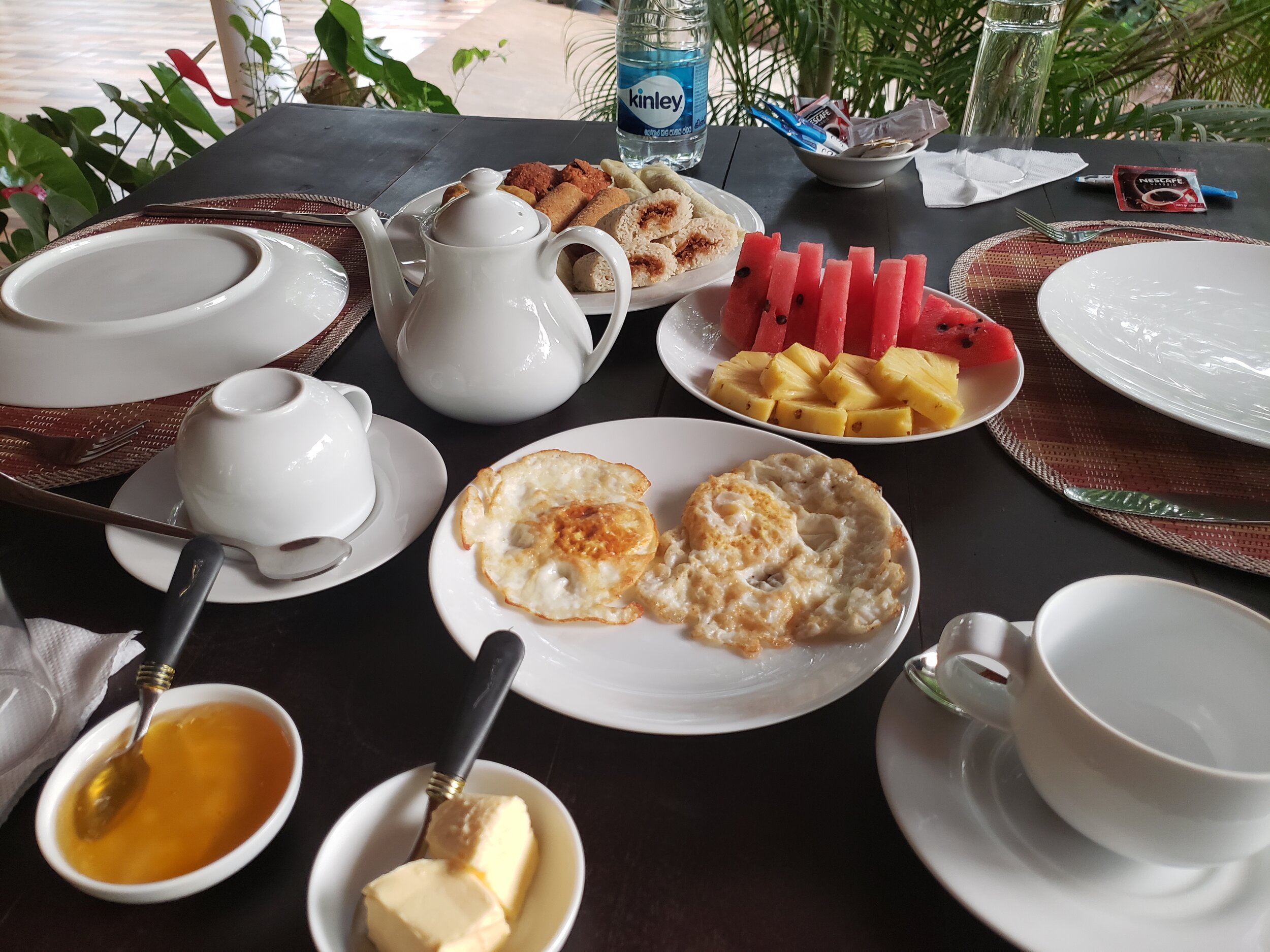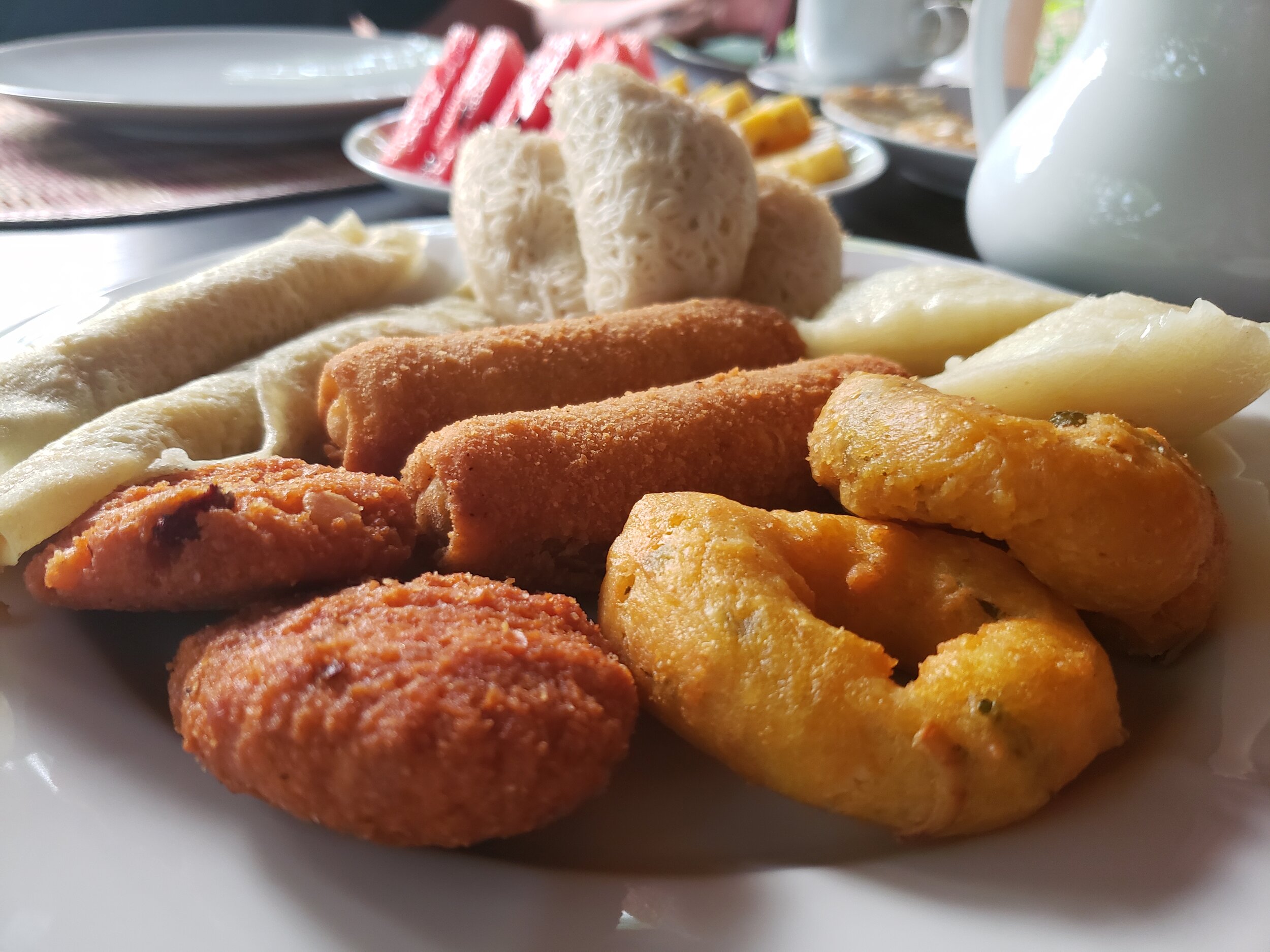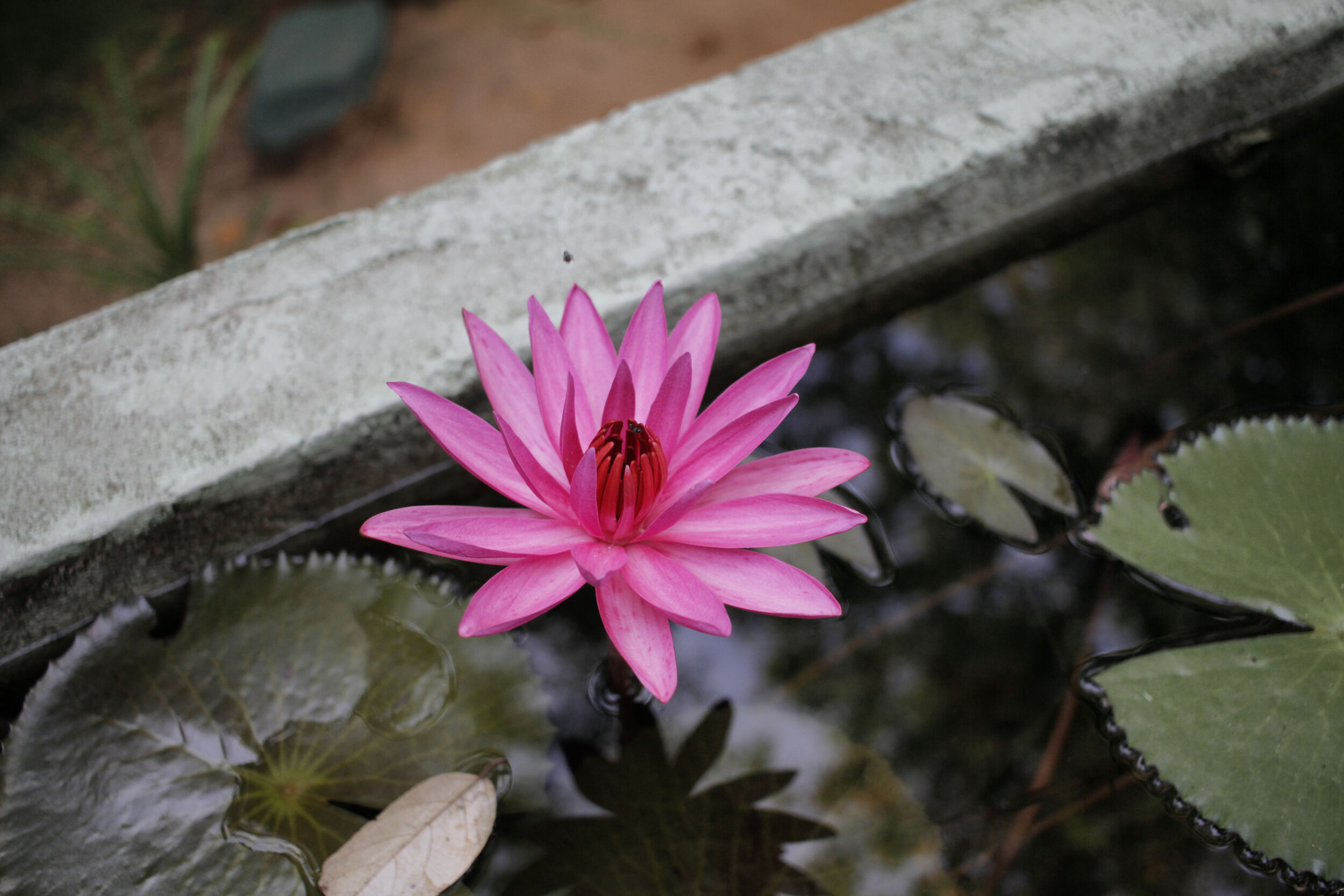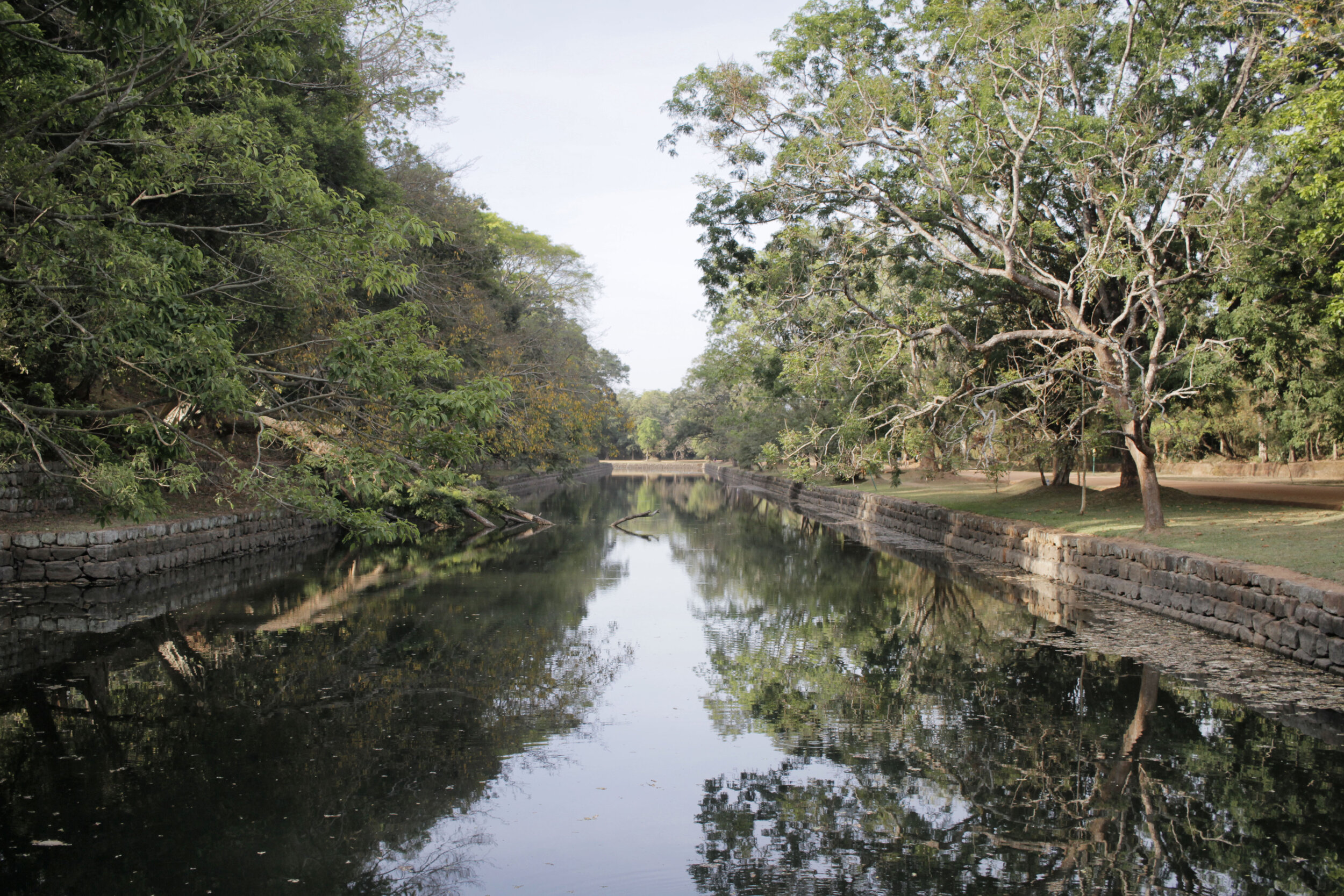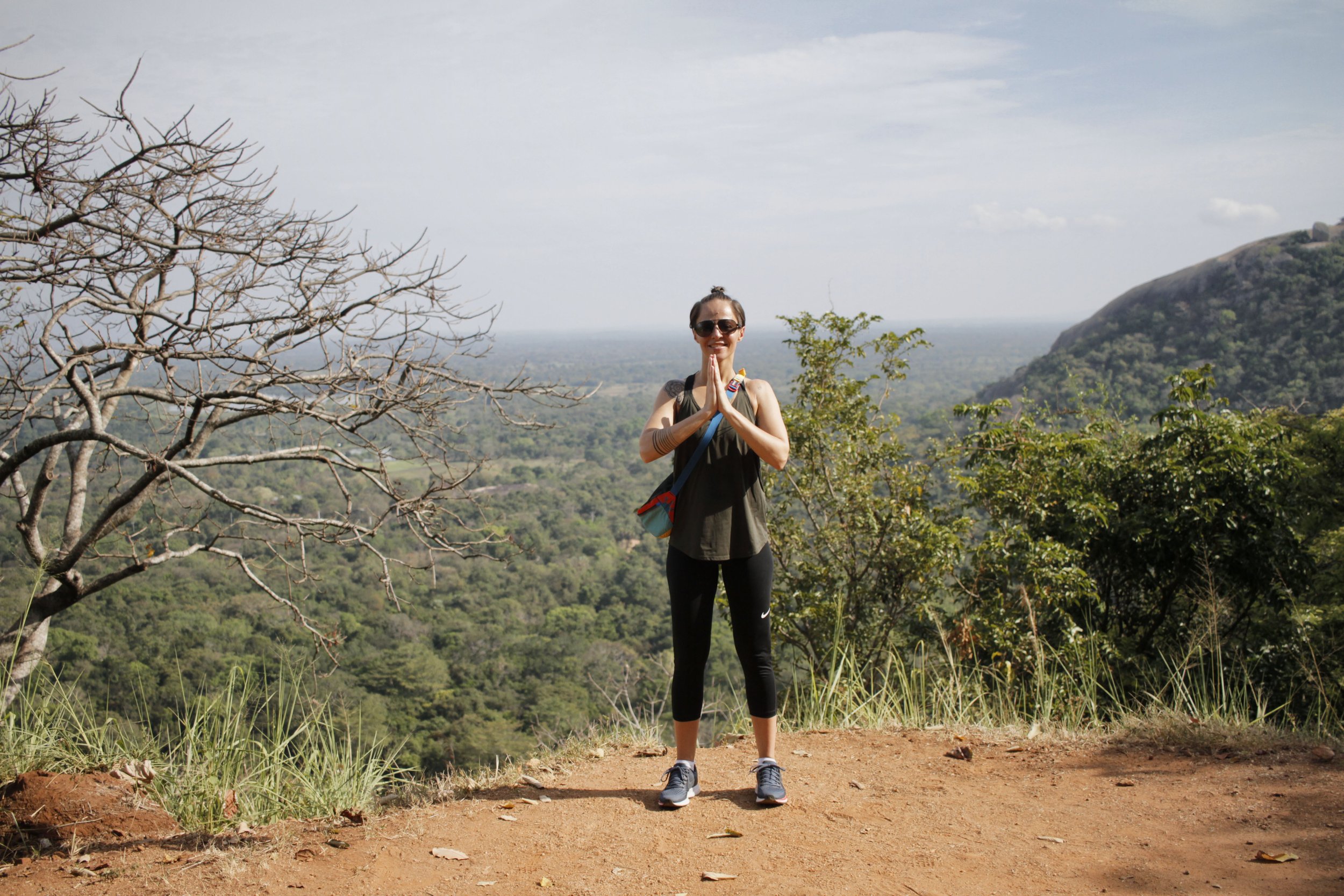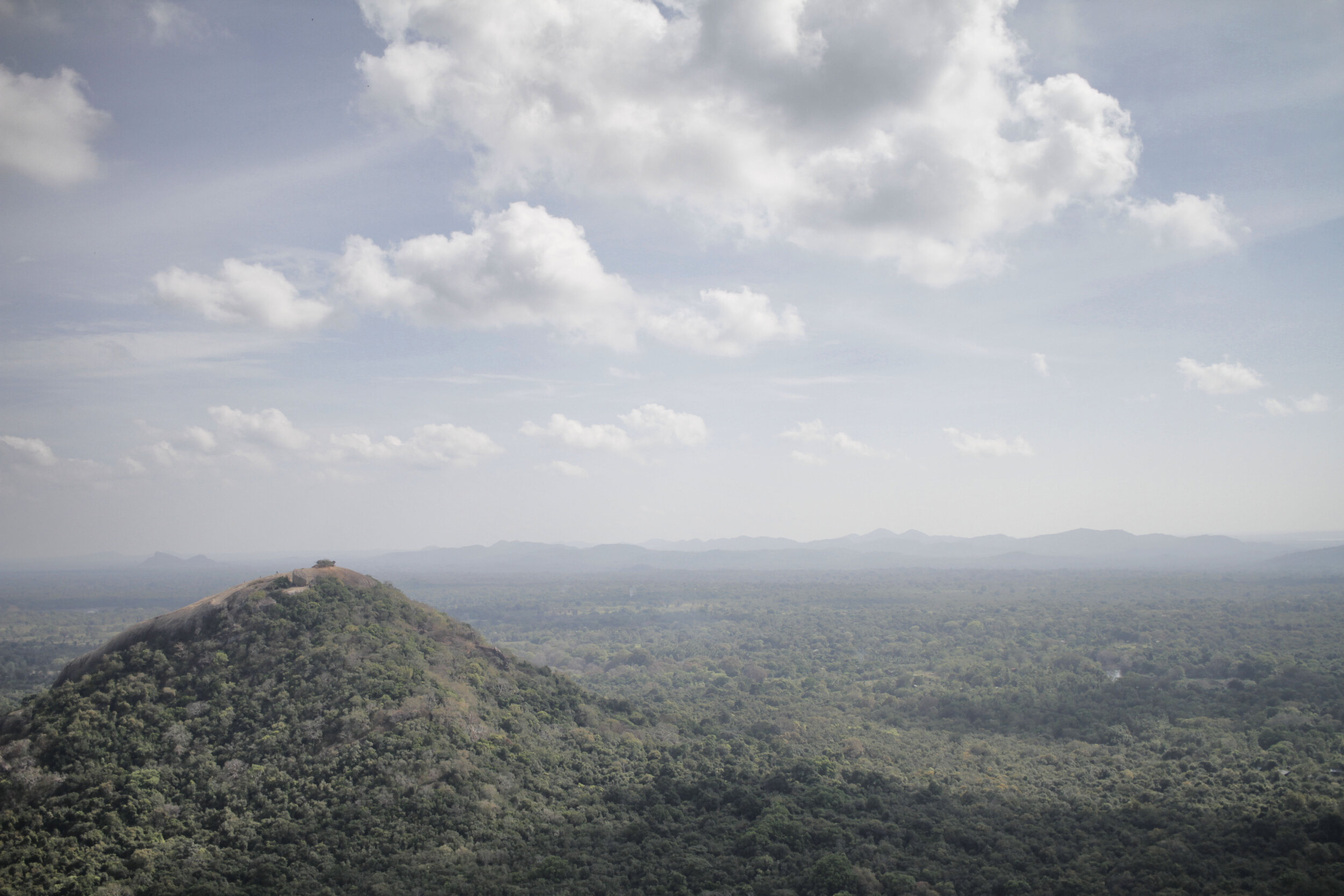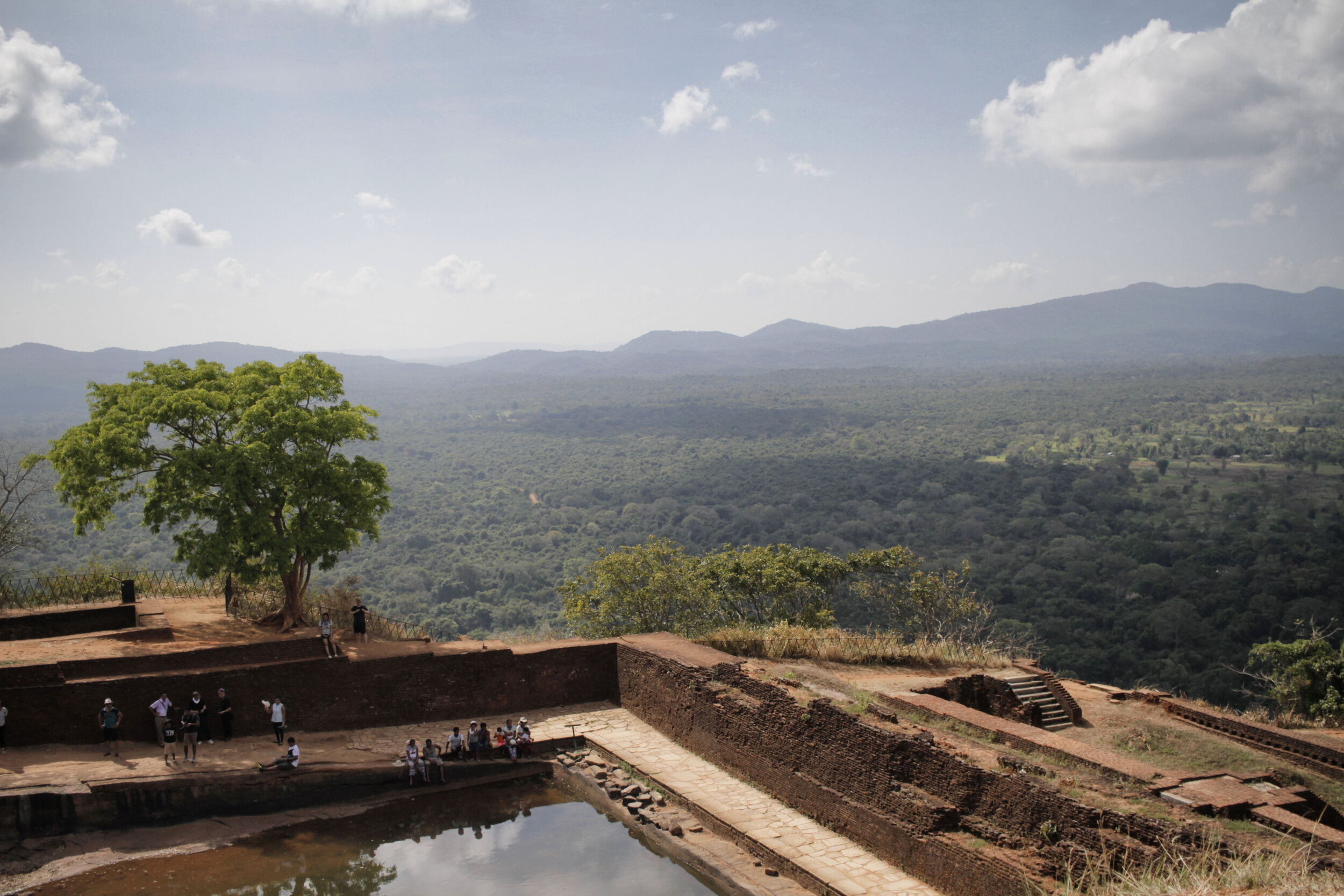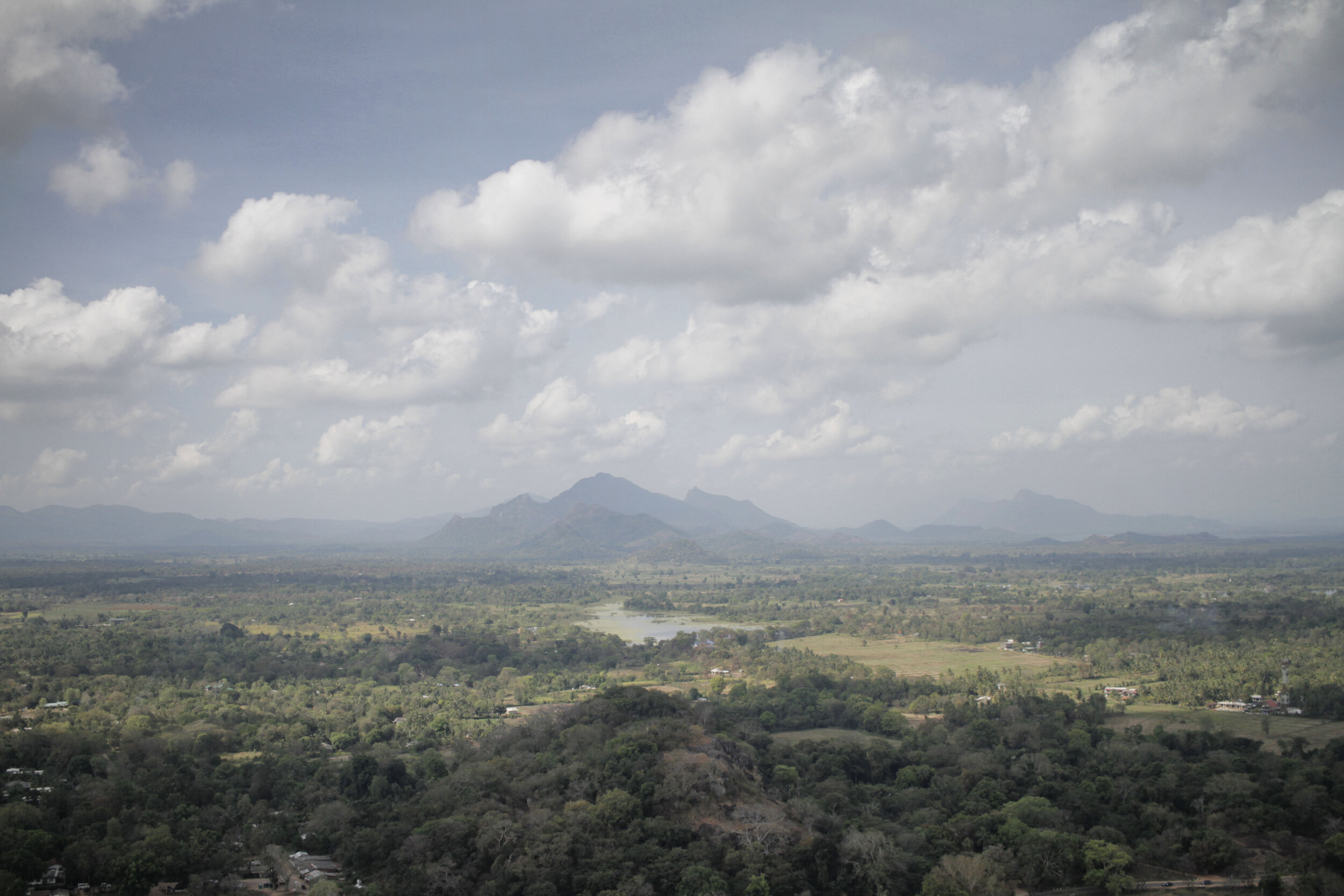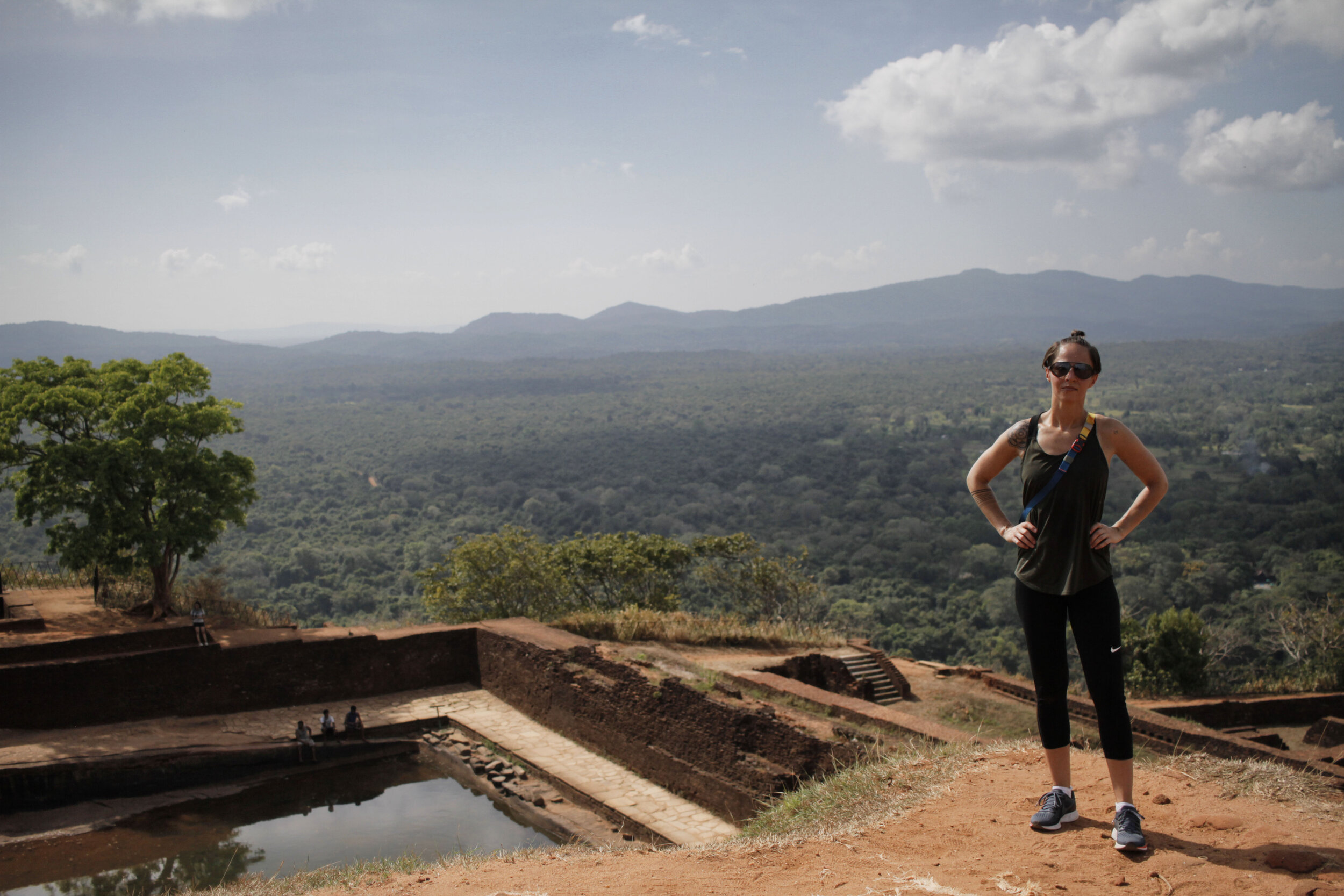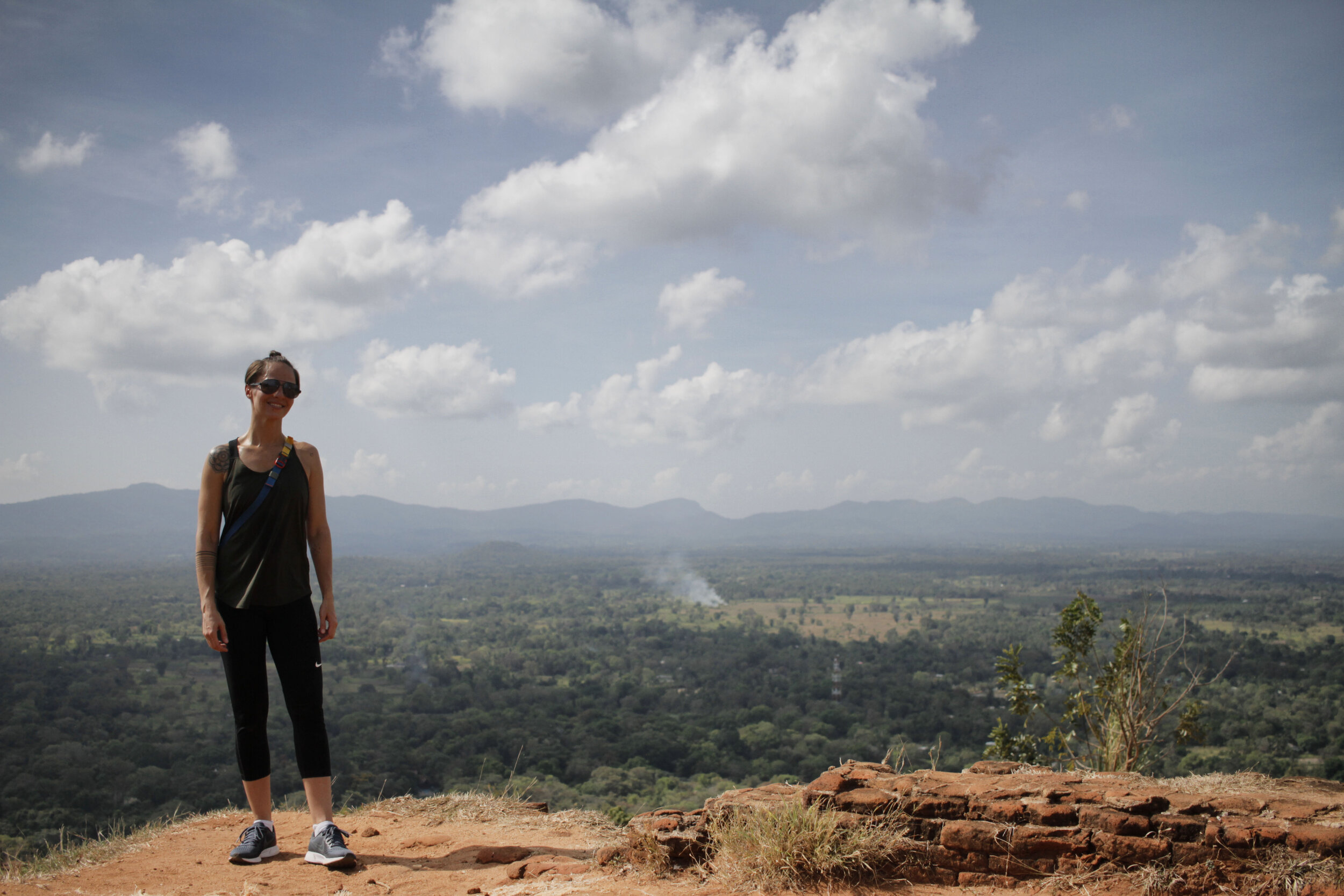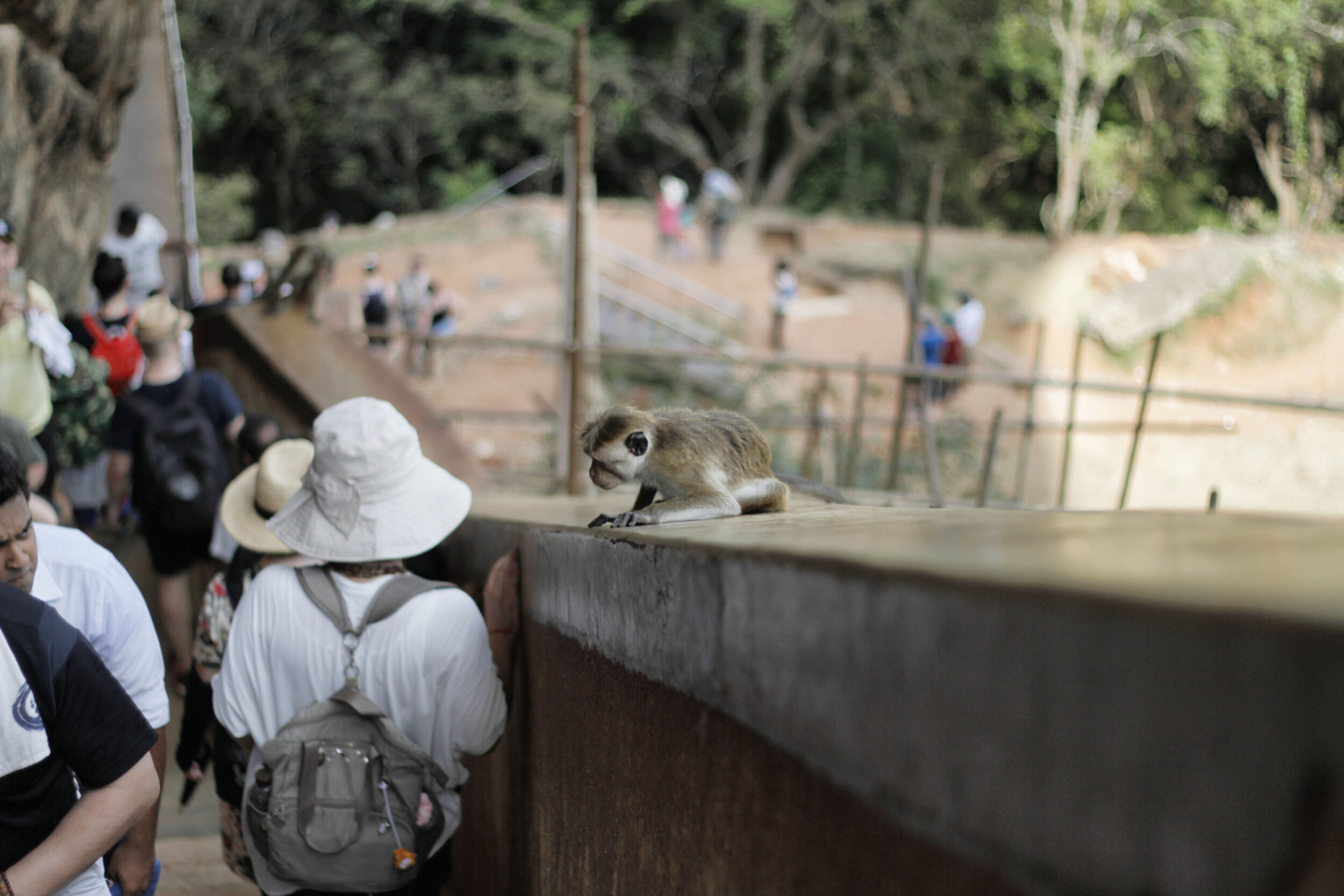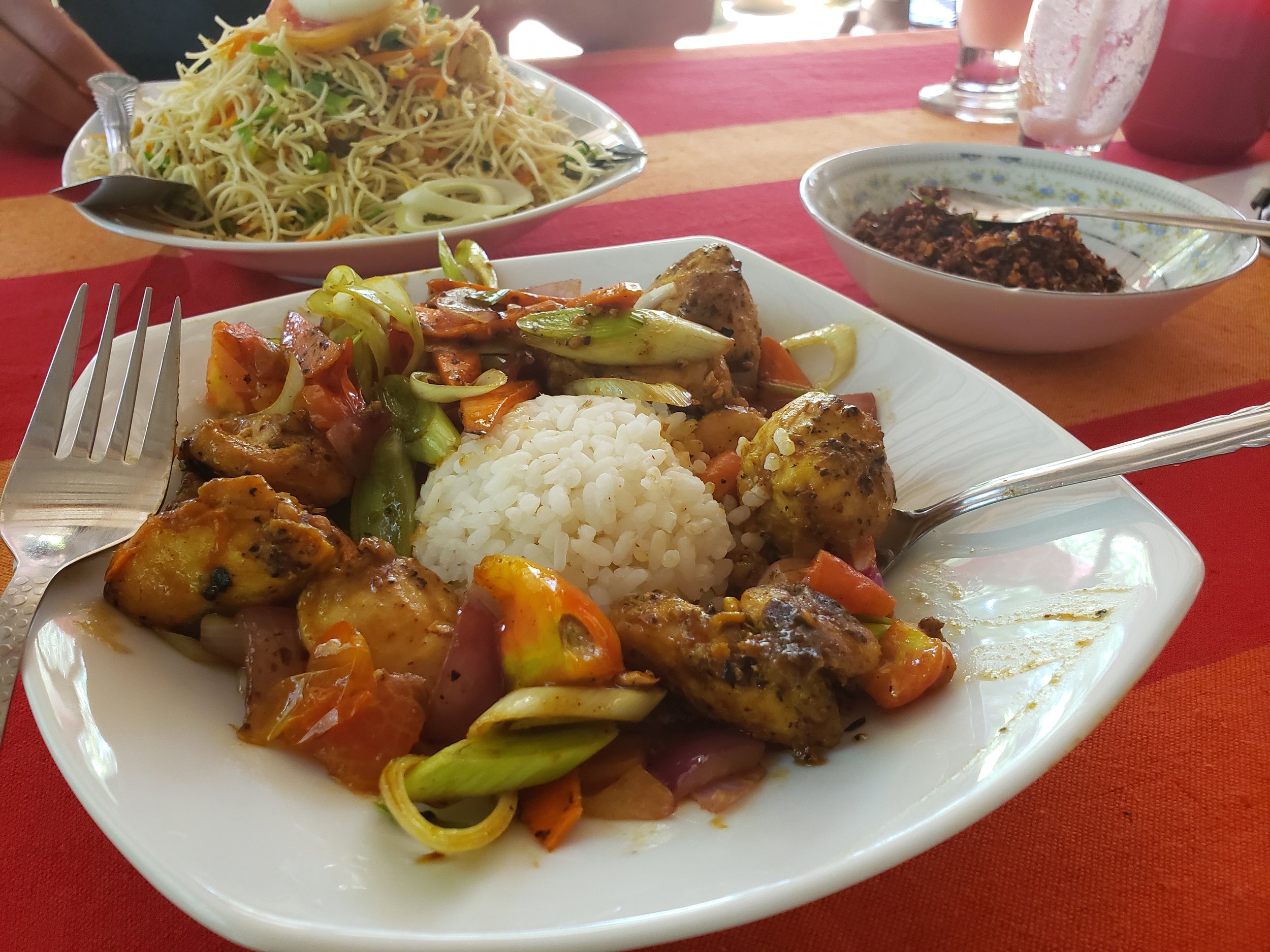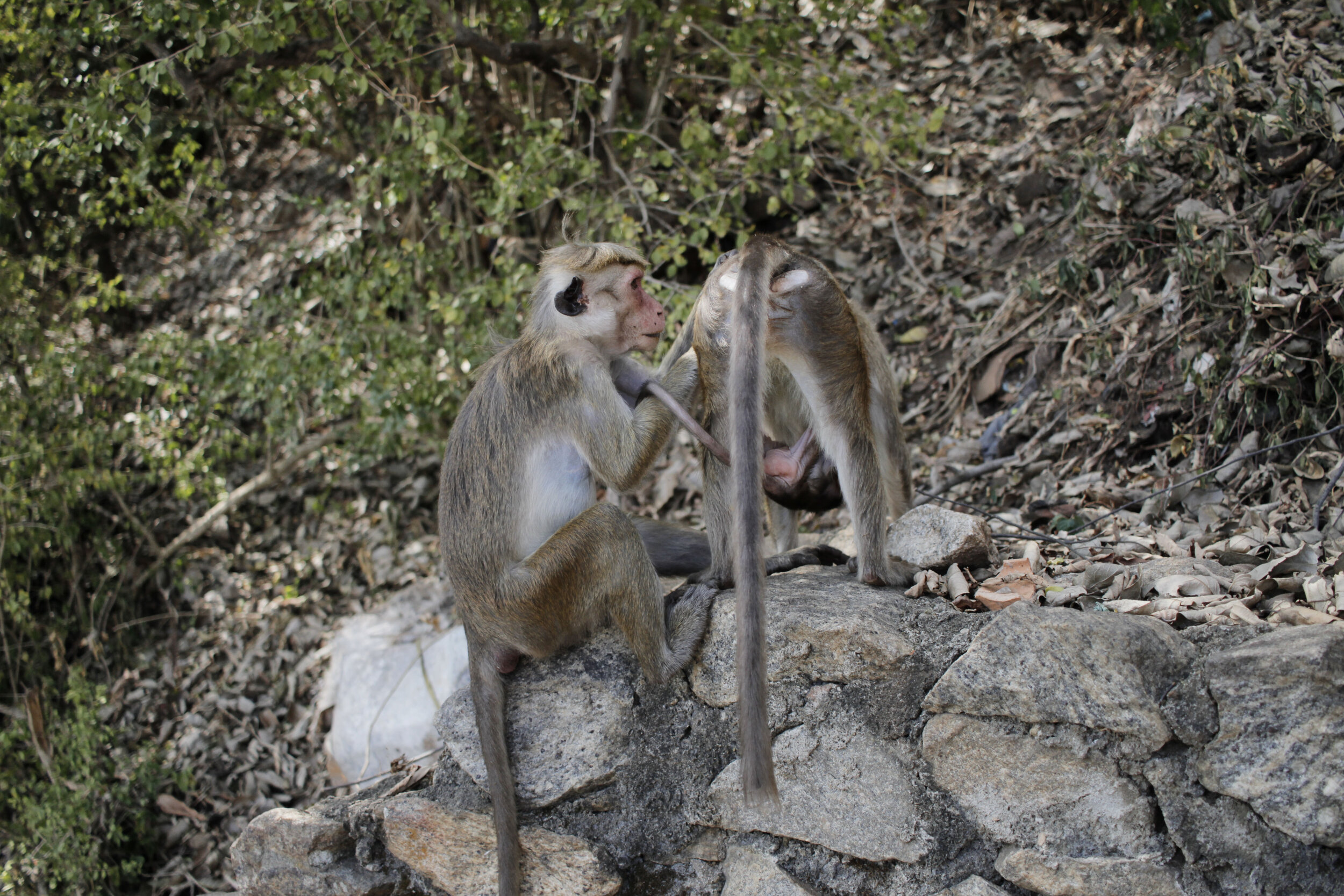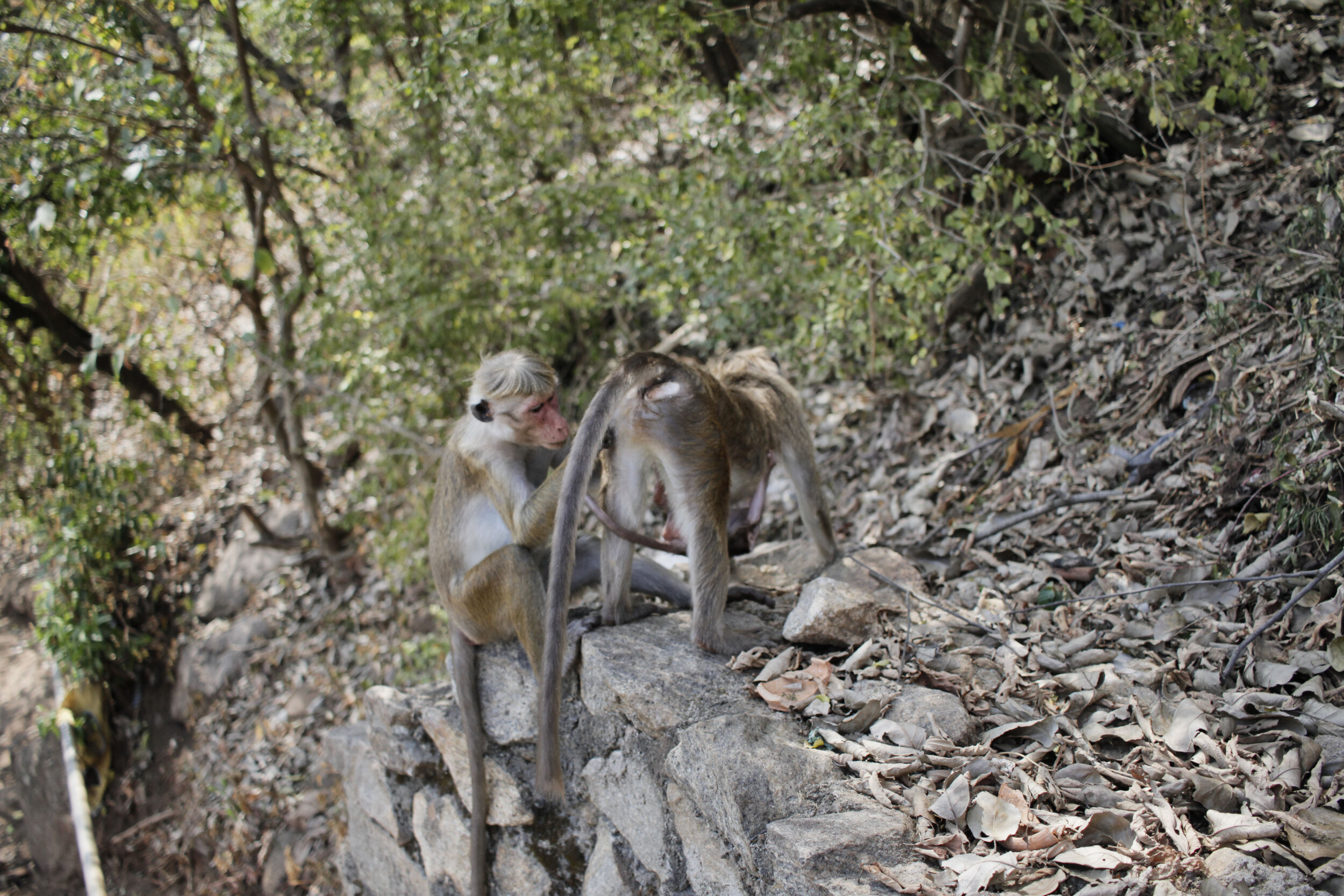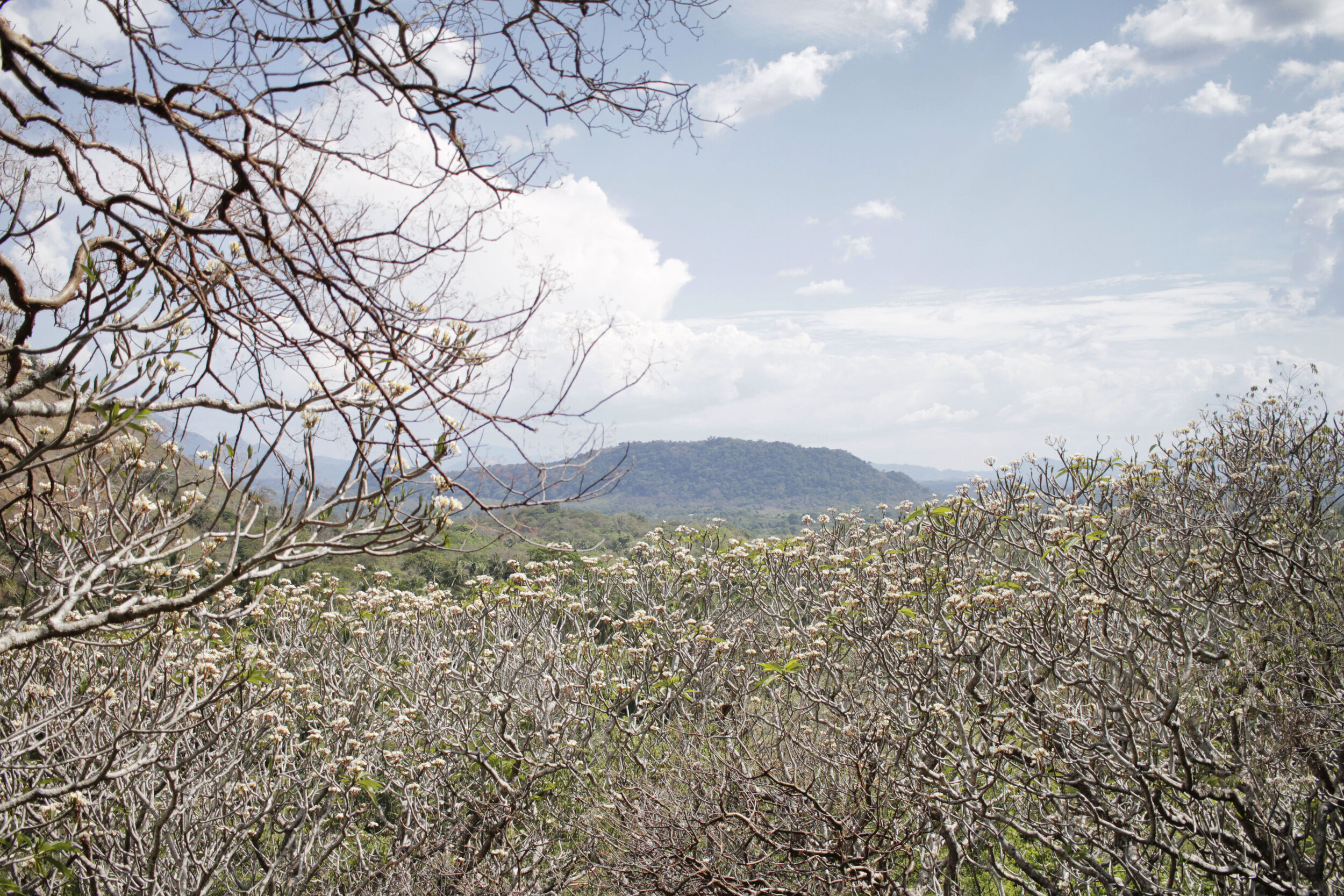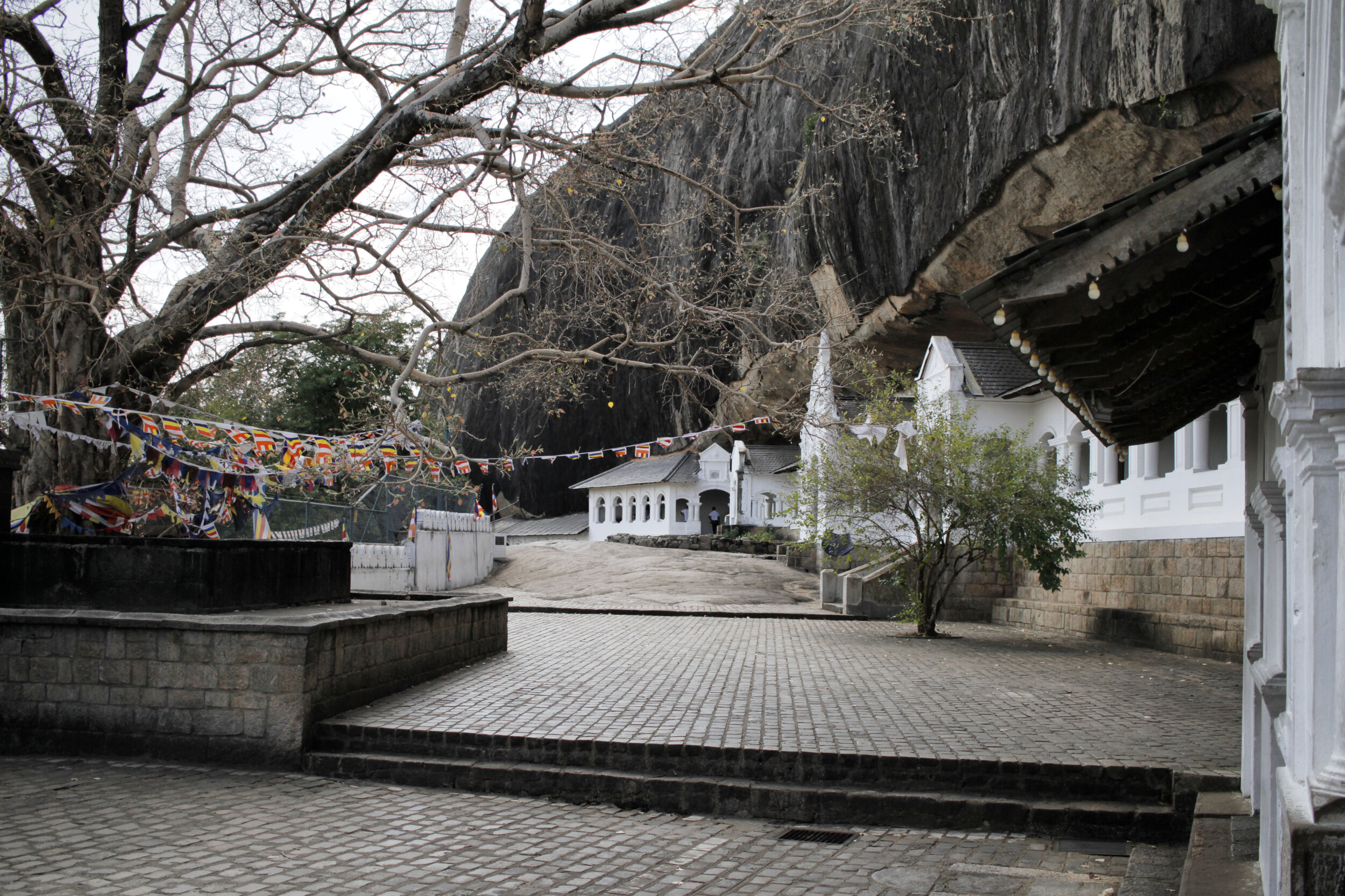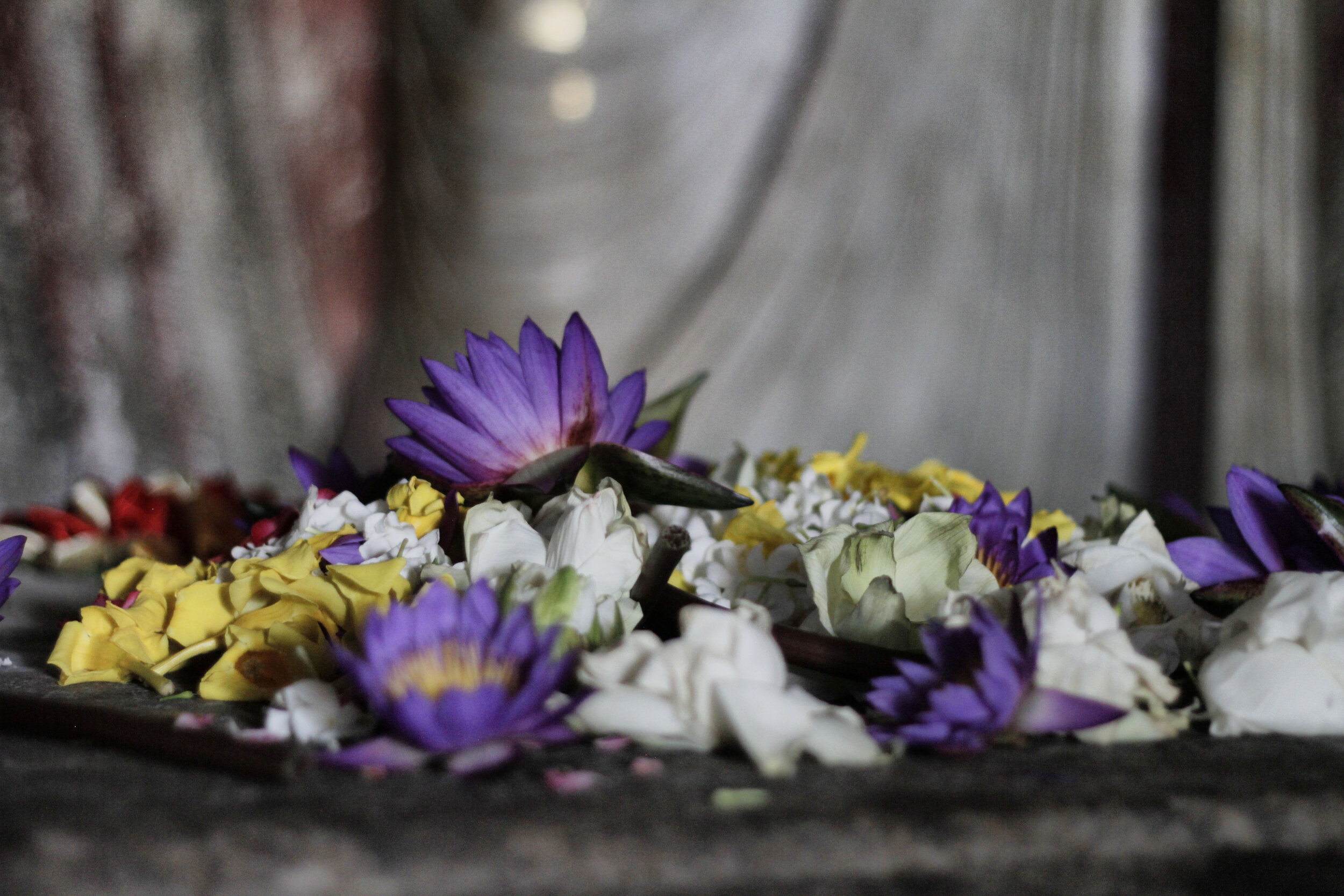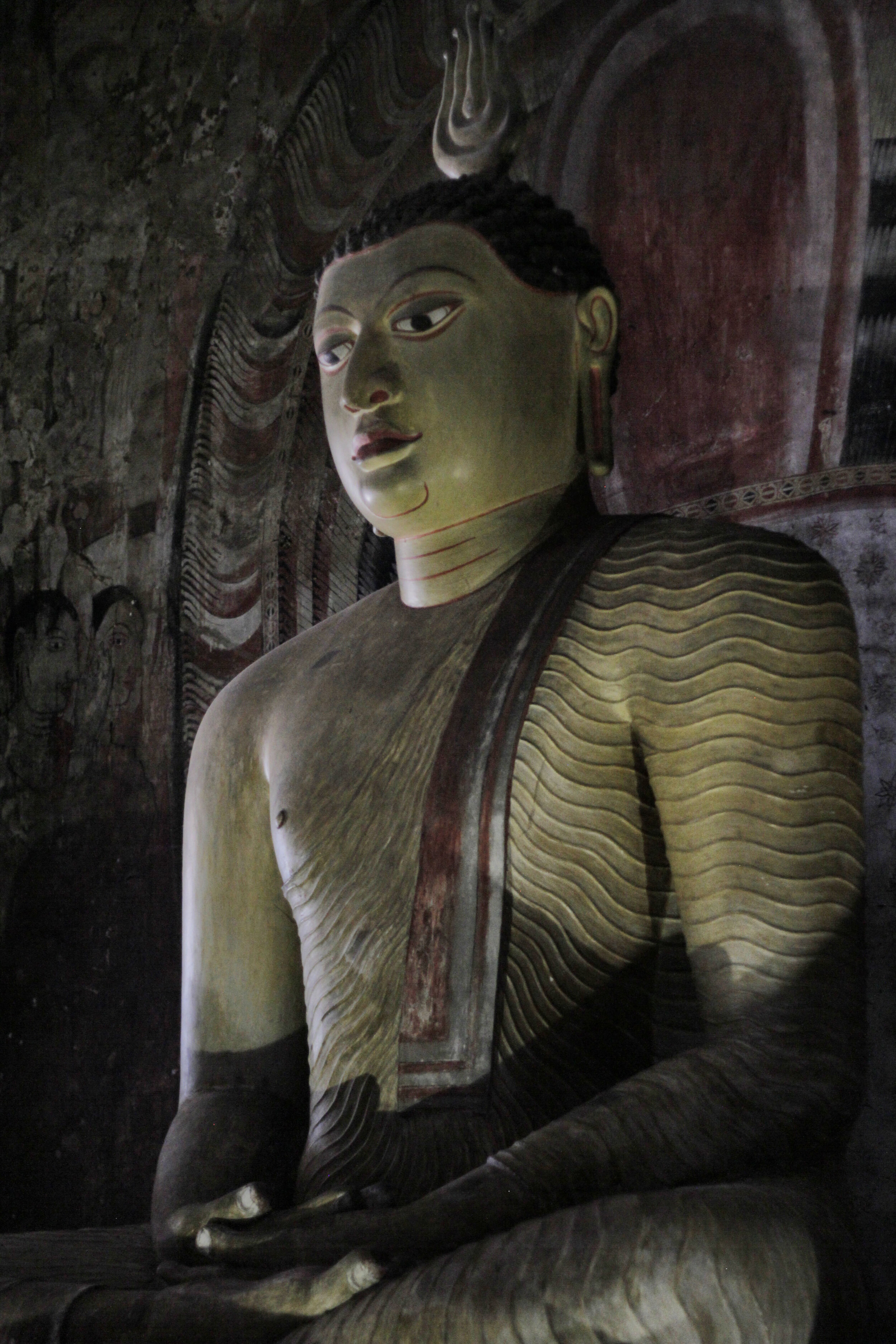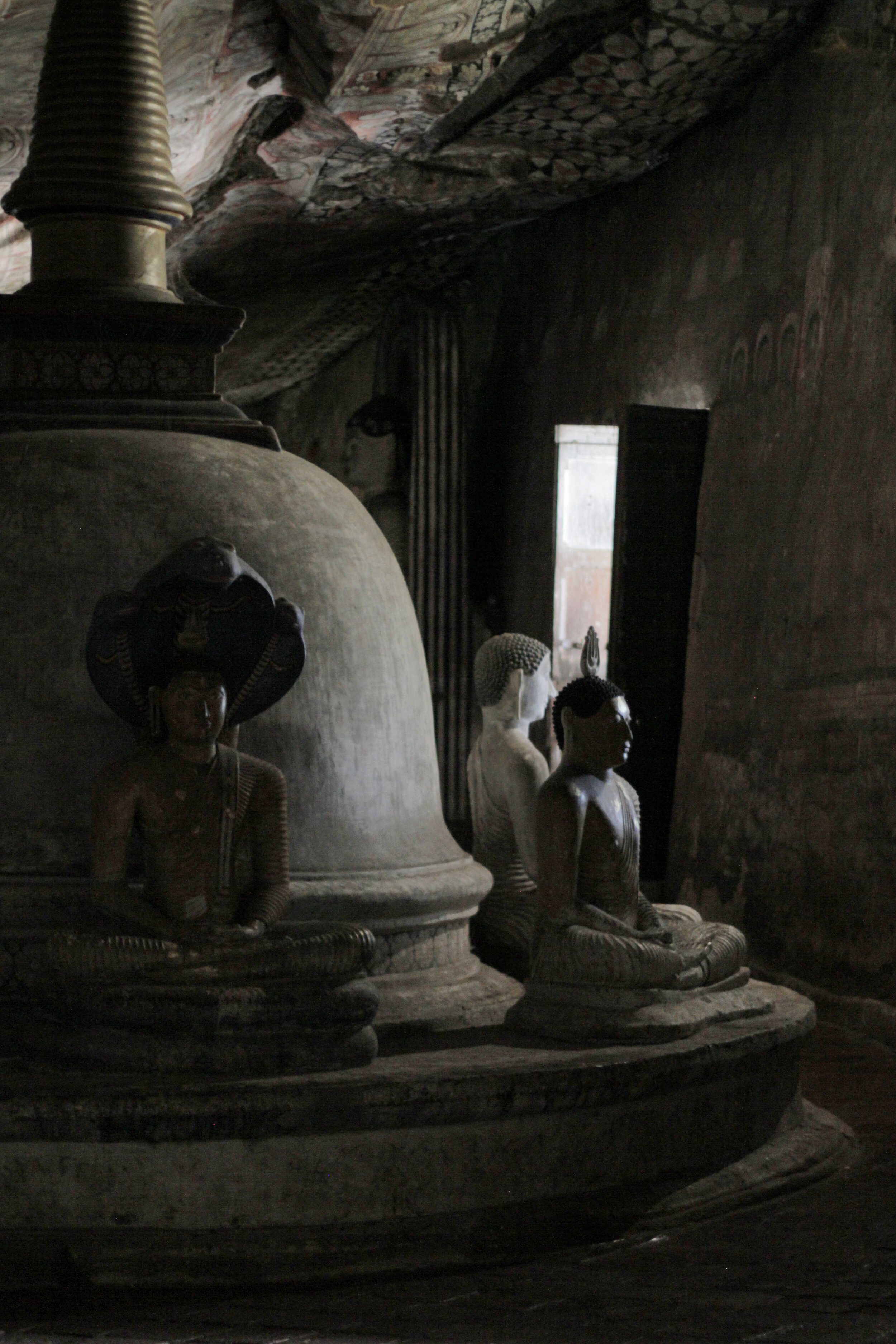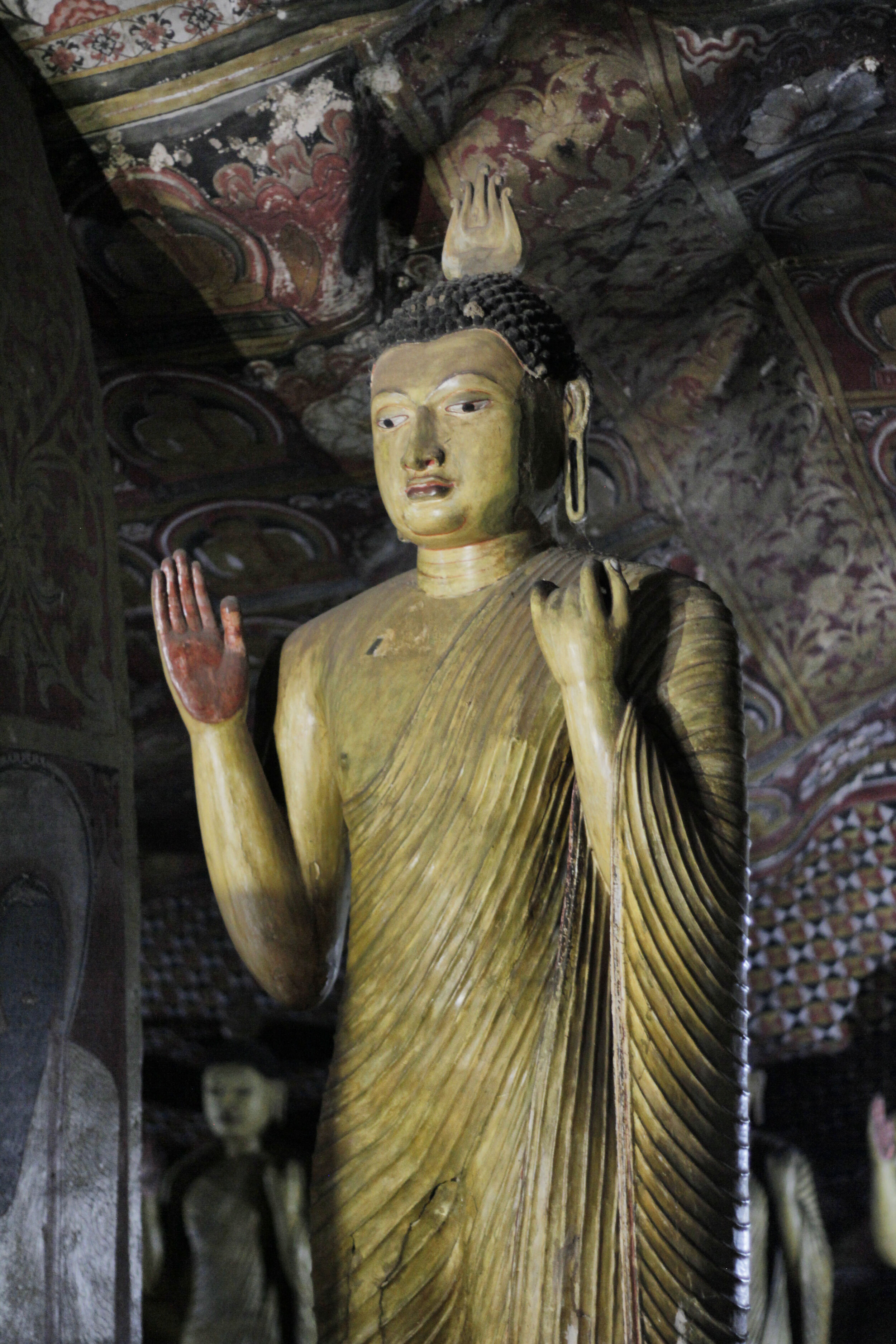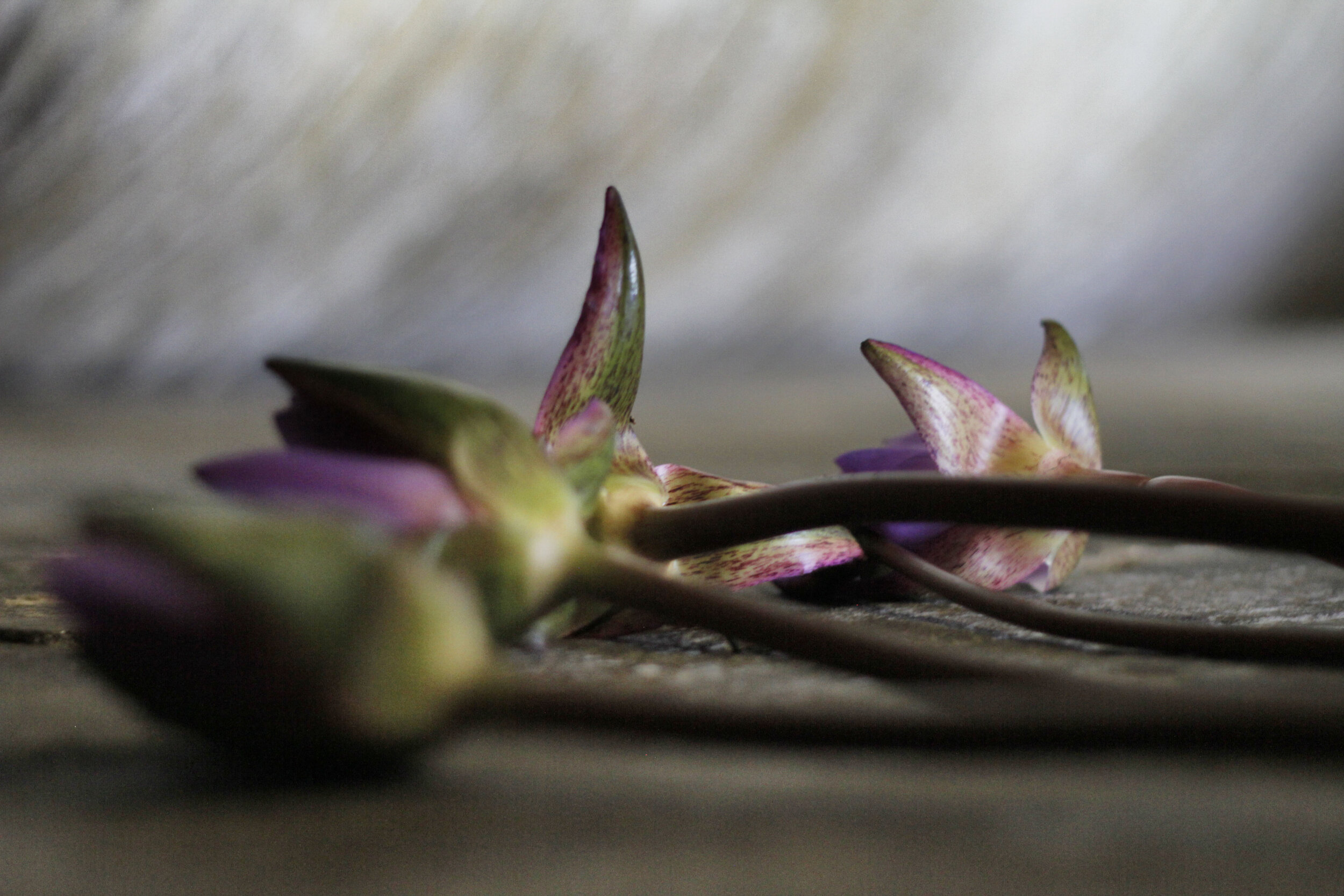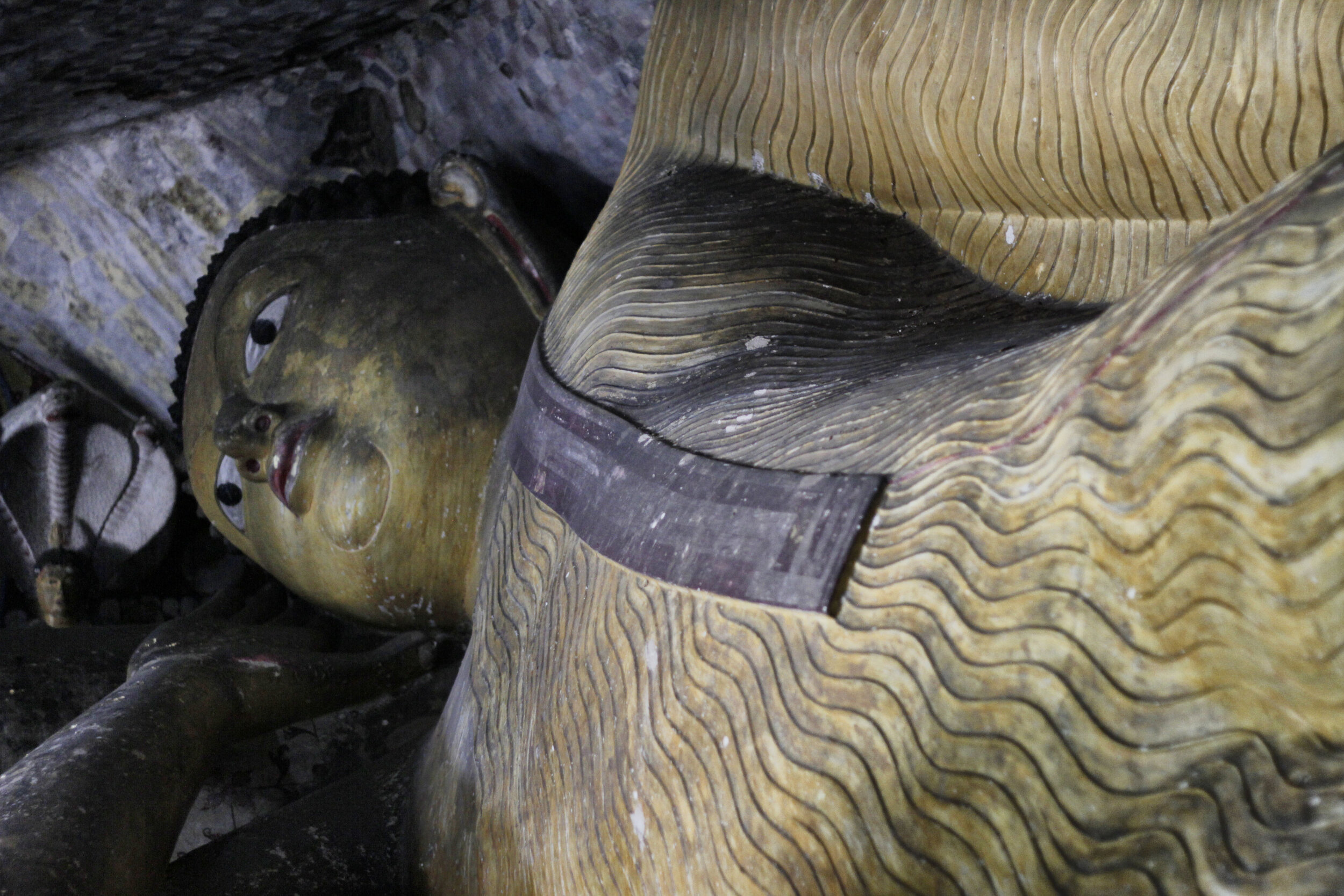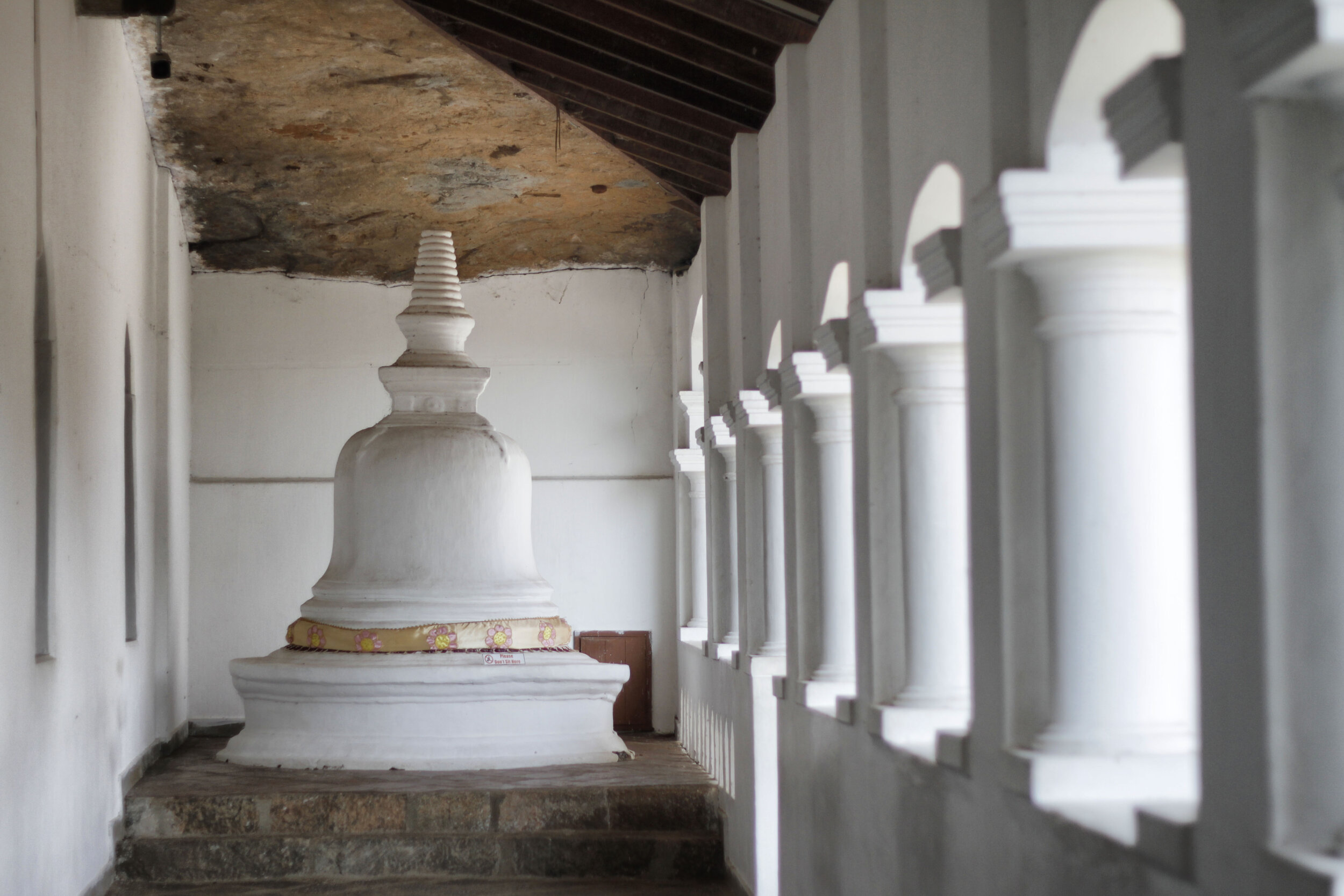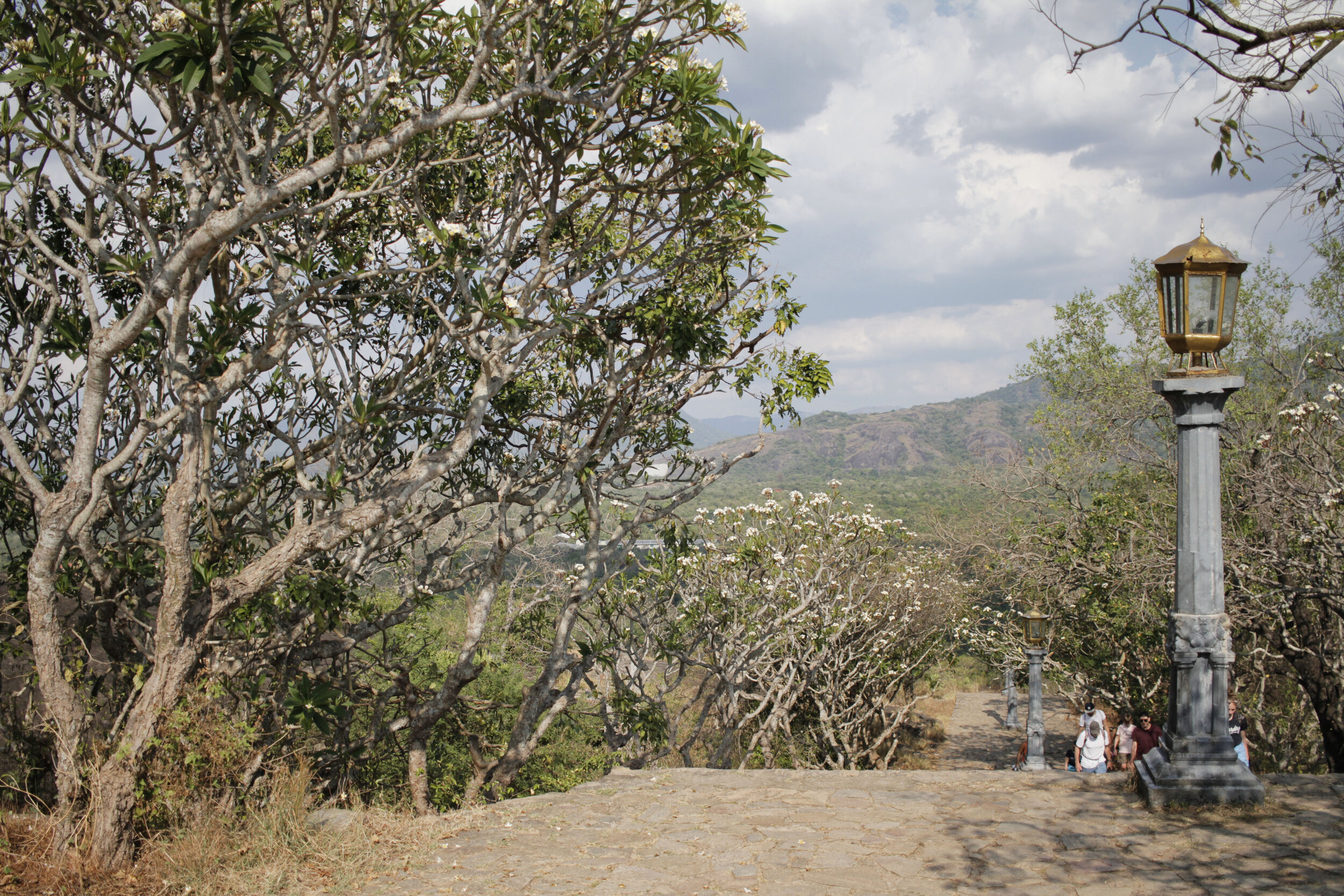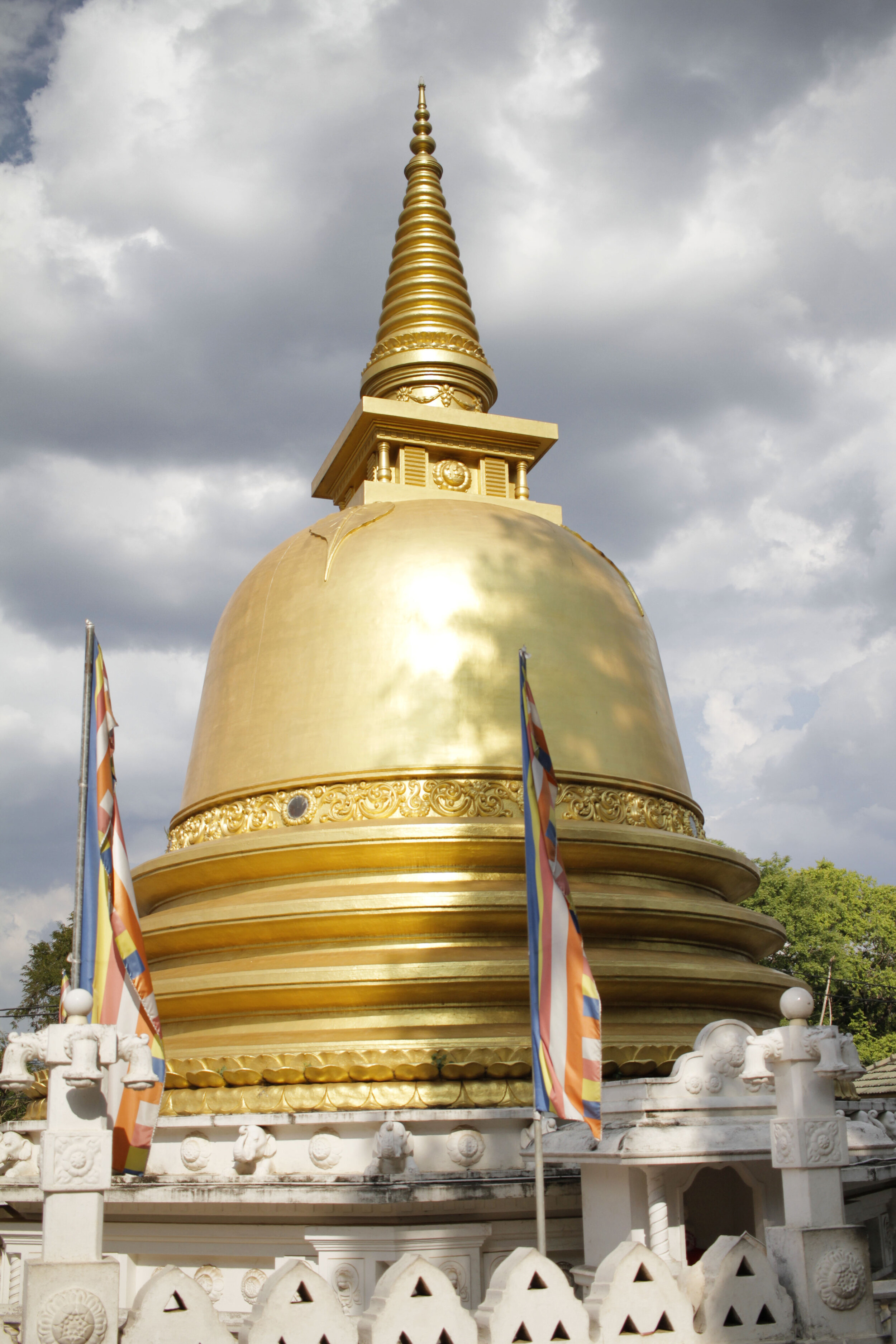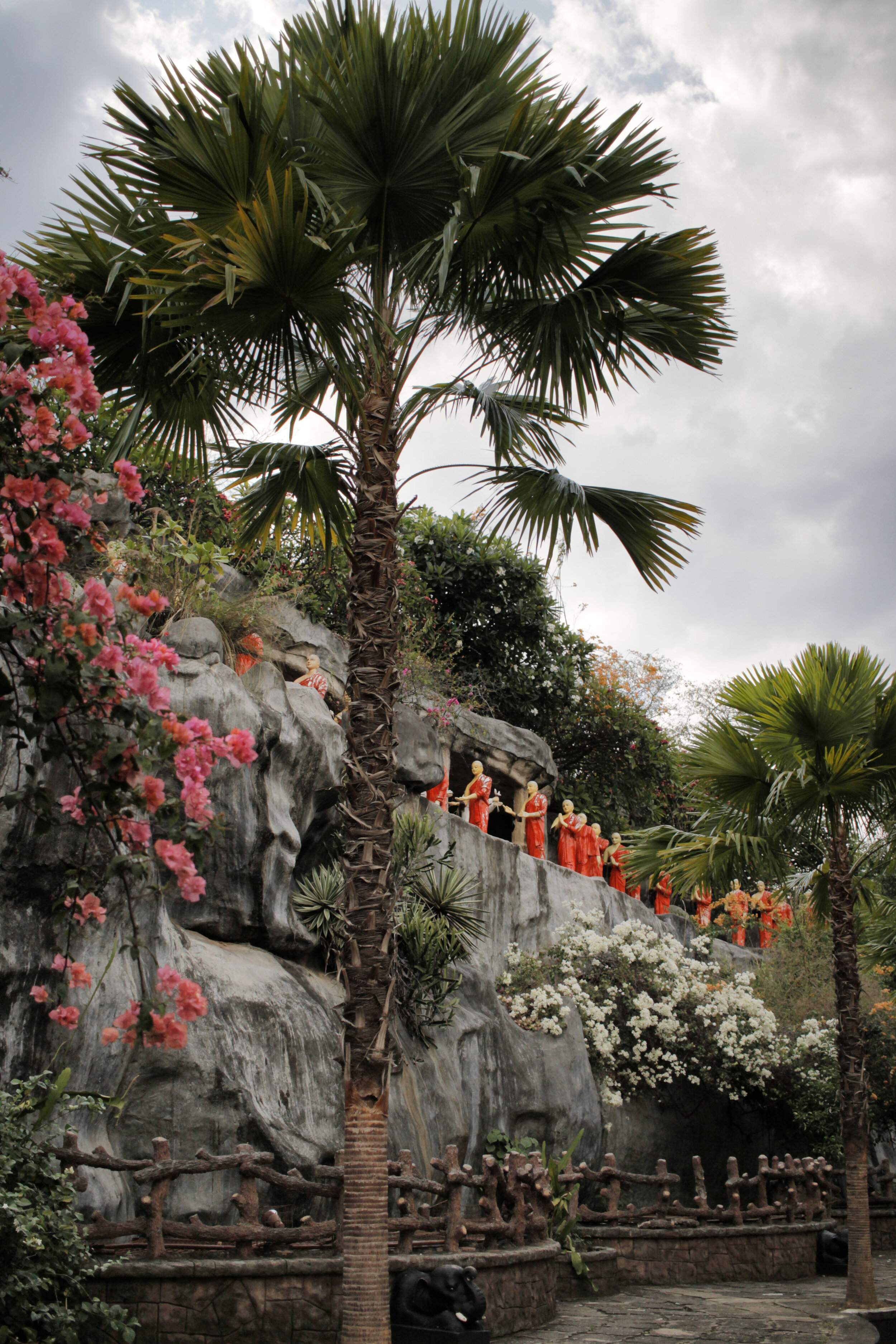Sigiriya, Sri Lanka
Eighth Wonder of the World (So They Say)
Sri Lanka is an island country in the Indian Ocean packed full of all the things those with wanderlust desire. High temperatures, beautiful landscapes, rich history, tasty cuisine and so much more offer travelers a wild experience. Nicknamed Pearl of the Indian Ocean and Teardrop of India, Sri Lanka is an island of magical proportions, once known as Serendib, Taprobane and Ceylon. It’s this small nations natural beauty, extraordinary biodiversity and precious gemstones that give it such a name, along with its teardrop shape off the coast of India.
Thought to be inhabited from as early as the 7th to 3rd century B.C., Dambulla is located in central Sri Lanka and the closet town to the Ancient City of Sigiriya. Dambulla is most known for the Sigiriya Rock Fortress and the largest and best preserved cave temple complex in Sri Lanka called Dambulla Cave Temple. The caves in the city provided safety to King Valagamba during his 14-year-long exile from the Anuradhapura kingdom. When King Valagamba returned to the throne in the 1st century B.C., he had an impressive rock temple built at Dambulla showing gratitude to the monks who had helped him by meditating for protection from his enemies.
Traveling through Sri Lanka for three weeks began north of its capital city, Colombo, circling the country clockwise. My first destination was a memorable one, Elephant Watching in Pinnawala, then the hot dry town of Sigiriya to visit the Eighth Wonder of the World and Ancient City of Polonnaruwa, followed by an up close and personal Elephant Safari at Minneriya National Park. Next, was exploring Giant Buddha’s, Botanical Gardens & Fire Dancing in Kandy, Nuwara Eliya, also known as the City of Light and Ella for its Epic Waterfalls, Train Rides & Jungle Mountains. And last but not least, Tissamaharama to visit Yala National Park and the cute beach town of Mirissa for the nearby Iconic Old City of Galle, Whale Watching & Stunning Beaches.
After an early checkout in Pinnawala, it was on to Sigirya, a town three hours northeast. On the way, we stopped by a tea plantation offering tours of its factory and museum. Our host arranged a tasting and we were happy to buy a bag of their vanilla tea for Rs1,500 or $8-9 USD.
Devour Streetside Snacks
Another hour into the drive we pulled over for lunch at a tiny restaurant called Asiri Awanhala. The buffet style spread was out of this world, bursting with flavor and spice. It included things like rice, lentils, stewed vegetables, fried fish and much more.
As we continued on to Sigiriya, we made another stop along the side of the road for some freshly made roti and corn nuggets of some kind being cooked over an open flame. Piping hot and full of fresh flavors, Sri Lanka has some incredibly delicious street food.
Late in the afternoon we arrived in Sigiriya, visiting a local shop to purchase a wraparound sarong for Rs1,500 ($20 USD). Along the ride I had been spotting men, one after another, wearing beautifully vibrant sarongs wrapped around their waists. Finally, it was on to our hotel, Palmyra Nature Hostel. It was remote but such a cute place, with standalone villas in the middle of the woods.
After sorting out our schedule for the next few days, we ordered a tuk tuk and drove a few minutes to Chooti restaurant for dinner. For under $10 USD (Rs200), we ordered quite a spread including veggie fried rice, veggie curry and both mango and mixed fruit juices. The meal was delicious and so big we barely made a dent.
Climb the Incredible Lion Rock
Early in the morning, we rose for breakfast at our homestay. They had prepared fried eggs, assorted pastries (some wheat based and others rice), fruit and coffee. There were definitely a few tasty treats but many were too sweet for my liking.
Full and prepared for the day, we walked a mile to Lion Rock. Lion Rock, a UNESCO World Heritage Site, was originally the ancient rock fortress of King Kashyapa from 477 to 495 AD and one of the best preserved examples of ancient urban planning. The king had his palace built on top of a huge rock and decorated its sides with colorful frescoes and even a mirror wall, shining so brightly he could see his reflection in it. After the king’s death, the capital and royal place were abandoned, becoming a Buddhist monastery until the 14th century.
The igneous rock earned its name from the enormous lion that greets visitors halfway up on a mid level terrace. The lion carved from rock served both as a welcome to visitors and a warning to enemies. Lion Rock itself rises 600 feet above the surrounding jungle with a flat plateau on top and was formed from the magma of an extinct volcano over 200 billion years ago.
It’s entry is through a large green building on the western side where tickets are sold for $30 USD per person. Luckily, washrooms were available at the entrance, along with a map of the site, if requested, which was super helpful.
By 7:30 a.m. we entered the grounds, walking through gardens and by ponds spotting huge lizards, monkeys and birds of all kinds. The heat began to intensify; it would reach 99 degrees that day and the park was getting busier by the minute. It was a great idea to start early to avoid both the heat and crowds. Sigiriya as a whole was very hot and dry, dryer than the rest of the country, and Lion Rock was no exception.
As we approached Lion Rock, its size grew even more massive. Stairs began to wind around the base and become increasingly steep. Trees covered much of the path so it was tough to see what lay ahead. For a moment, I thought we’d be walking directly under the huge rock but eventually we reached a clearing and a path leading up the side.
Half way up the exhausting climb there was a vantage point to stop and admire the views. Off in the distance there was a white Buddha statue, gardens below and green in every direction.
Eventually, we reached the lion’s paws for a much needed rest and water break where a fountain splashed cold water for refills. Hikers and tourists alike gathered around to cool off in the shade while monkeys jumped overhead from tree to tree.
Between the paws there was a set of steep stairs leading to the highest plateau. In total, it took an hour or so to climb Lion Rock but wasn’t too bad other than the intense heat.
The highest platform was incredible with 360 degree views of the surrounding landscape. You could even see the smaller rock many people climb, some of which say is much better but a tougher trek. The smaller rock didn’t look as busy as Lion Rock which was littered with tourists on tin all directions. It was tough to move around without feeling like you might tip right off the edge.
The top of the rock is home to the ruins of the upper palace including houses, farms and even a water reservoir nearly 200 feet long used for drinking, washing and growing plants. Designed by King Kashyapa, the sites advanced water system and water gardens below were strong enough to pump water up to its surface. Cold water was even designed to run behind stone benches to cool its inhabitants in this city in the sky.
After exploring and taking dozens of photos, we began the climb down which was much easier than the way up. A few of the cutest little monkeys followed us down the rock as we lined the staircase, one by one. They moved so fast sliding down the ledge that it was tough to keep up with them.
Unfortunately, I missed a shot of the famous mirror wall because I didn’t know it’s significance at the time but I do remember viewing it on the way down. Made of brick masonry and covered with highly polished white plaster, the mirror wall is partially covered with verses scribbled by visitors, some dating as early as the 8th century. Most, though, date from the 9th and 10th century where people from all walks of life wrote on the wall, from poets and governors to housewives. It’s also the only evidence of poetry from this period of time in Sri Lanka.
Near the bottom, men were selling handmade goods so we purchased a beautiful mahogany Buddha for 4,000 RUP. It was a relief to finish the climb but totally worth the effort.
Afterward, we jumped in a tuk tuk to Milli’s for lunch. We ordered chicken with noodles and “deviled” chicken which tasted similar to stir fry. To drink, watermelon juice and an incredibly sour lime juice.
Next to the restaurant a shopkeeper was working with brass. He carved a tiny little elephant and handed it to me, telling me it would be something to remember my time there.
Explore Dambulla Cave Temple
After lunch it was on to Dambulla Cave Temple and Dambulla Golden Temple, a cave complex situated in the central part of the country and a World Heritage Site since 1991. On the way, we stopped at a spice market called Ravana which turned out to be a total scam. Our guide walked us through an outdoor garden, explaining the medicinal properties of each plant. Inside the little shop, health and beauty creams were displayed in wooden boxes. Without being aware, we purchased oils for arthritis pain, creams for the face, under eye and hair removal, along with vanilla and cardamom for baking. Later on, we found out the prices were ten times higher than local markets, so please don’t waste your money!
Continuing on to the temple, it was another 30 minutes from Sigiriya (2,000 RUP) and as usual, our driver waited outside while we visited the site. After paying an entrance fee of 1,500 RUP each, the climb began. The large stone steps on the way up take about 20 minutes to traverse and stopping to rest along the way is a must. You’ll also find vendors selling sarongs and yoga pants, along with curious little monkeys playing on the stone walls.
Once you reach the top, the views are incredible, with flowering trees and white puffy clouds in all directions.
Before setting foot inside, we were asked to “check” our shoes for 25 RUP at the entry point. A few others hid theirs around the corner instead of paying but we didn’t want to risk it. Visitors also had to cover their shoulders before entering the temple.
Once inside, we realized the stones had been bathing in sunlight all day and bare feet weren’t the smartest idea. It would be ideal to remember a pair of socks for next time. For comfort, we ran to the shaded areas to avoid burning our feet and began exploring. On the righthand side, a number of caves offering a retreat from the heat, each one different from the last.
Initially, we noticed that all throughout the temple there were small baths filled with waterlilies left by visitors. Personal worship of Buddhist disciples is taken very seriously and considered a respectful recognition of the greatness of the Buddha as a spiritual teacher and an expression of gratitude for leading humankind out of worldly suffering.
Of the many objects of offering used presently in Sri Lanka, flowers have become the most important and well liked. They represent the minimum requirement at any form of Buddhist worship. The color, smell and quality of the flowers are taken into account when selecting. And, before being offered, flowers are bathed with filtered water.
Dambulla is the largest and best-preserved cave temple complex in Sri Lanka. The rock towers 500 feet over the surrounding plains where more than 80 documented caves can be found. Major attractions are spread over five main caves, which contain hundreds of unique statues and paintings.
Each of the five main caves vary in size and complexity and include the Cave of the Divine King and Cave of the Great Kings. Inside each cave, it was cool, calm and quiet. The ceilings were covered with intricate paintings, with one containing a shocking 1,500 paintings of Buddha on its ceiling.
The figures were also very interesting. Some were large in scale, filling entire caves, while others were smaller in size. One cave had a lying Buddha 50 feet long representing the days of his last illness, just before he was about to enter parinirvana, nirvana-after-death. Another cave had 50 Buddha statues, as well as a statue of the king.
It’s these cave complexes where prehistoric Sri Lankans would have lived before the arrival of Buddhism in Sri Lanka as there are burial sites with human skeletons about 2,700 years old found in this area.
After an hour of exploring the caves we collected our shoes and began the descent, enjoying the views and flowering trees full of bumble bees.
Admire Dambulla Golden Temple
Our tuk tuk driver waited at the bottom of the stone staircase and continued on with us to the Golden Temple where we took a stroll around the exterior. It housed a huge golden bell-shaped structure and a golden Buddha. High up on the wall on the right side was a row of soldiers dressed in brightly colored garments.
Heading out, our driver stopped at a fruit stand for some watermelon, banana, mango and large jug of water, also gifting us two king coconuts. The water inside tasted yummy but was too warm to be refreshing.
The following day, would be a trip to the Ancient City of Polonnaruwa, the second capital of Sri Lanka after the destruction of Anuradhapura in 993. The area is composed of Brahmanic monuments built by the Cholas, as well as ruins of the garden-city created by Parakramabahu I in the 12th century.






